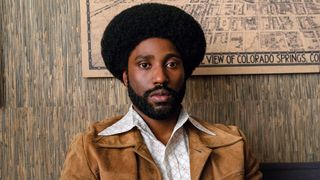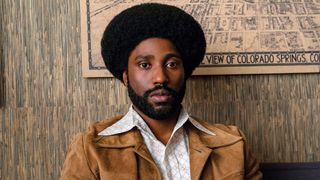The first major motion picture screened in the White House, for president Woodrow Wilson, definitely moved the dial on race relations in America. Moved the dial dramatically backwards, that is.
The film was DW Griffith’s explosive Birth of a Nation, made in 1915 and acclaimed by many as a cinematic masterpiece, while being justifiably criticised by others, including the National Association for the Advancement of Colored People, as rabid, racist propaganda.
The movie was made in California but likely set in South Carolina prior to and immediately following the US Civil War (1861-65). It was based on a book called The Clansman, published in 1905 by Thomas Dixon Jr.
As the title suggests, the novel lauds the Ku Klux Klan in the period of Reconstruction following the collapse of the Confederacy. It portrays cynical carpetbaggers, encouraging newly freed blacks to threaten and intimidate the defeated white population. Villains are in blackface. Overwhelmingly, the book was arrant nonsense. But Griffith faithfully translated this novel to the screen.
This perhaps explains why a great contemporary American filmmaker in Spike Lee is so obsessed by Griffith’s searing work and why scenes from Birth of a Nation appear in his 2018 film, BlacKkKlansman.

But cinema need not be regressive. Just as easily there can be found very positive signs which point to a more enlightened future.
Move forward a century to 2015 and Kathryn Bigelow’s superb film Detroit, which focuses on the 12th Street Riot in the Motor City in the summer of 1967.
The movie is a dramatic reconstruction of a crime which was detailed exhaustively by John Hersey in his book The Algiers Motel Incident. In summary, three young African-American males were murdered by Detroit police officers. Others, including two young white women, were alternatively humiliated and brutalised by the same police with occasional backup from the Michigan National Guard or Michigan state troopers.
Watching Detroit transports the viewer to the oppression imposed on African-American citizens by some white police who may be described accurately as racist bullies. While Motown singers perform marvellously well for mixed-race audiences downtown, out on 12th Street life is a grind, characterised by very limited opportunity, if not outright poverty.
Bigelow is a brilliant director, demonstrated by the nuance displayed in Detroit. Not all the police are oafs, as shown by the fact that the Detroit homicide squad charges the three police involved with murder. In the movie, one of the African Americans held captive in the motel is helped to escape by a National Guardsman, and a state trooper gets him to hospital for his injuries. Some police routinely display decency, but rogue cops, without badges or identification, tolerated by a city regime for too long, will spin out of control when a crisis hits.
As can be seen from the brief observations about Detroit, there are contributions by the American cinema to race relations which are not only revelatory but also aimed at changing opinion for the better. The last half-century of American filmmaking illustrates the point.
Perhaps starting with Stanley Kramer’s film of 1958, The Defiant Ones, the clear argument emerges about the need for mutual racial respect. Two convicts played by Sidney Poitier and Tony Curtis escape captivity while being chained together in antagonism. It is not subtle, but the need for acknowledgment of the white and black escapees by each other is at the core of the film.
This theme is extended in the Katharine Hepburn and Spencer Tracy classic 1965 film Guess Who’s Coming to Dinner, again directed by Kramer with Poitier in the leading role. The movie deals sympathetically with marriage across the racial divide.
But a far more gruelling role awaited Poitier two years later in Norman Jewison’s confronting In the Heat of the Night. With a soundtrack featuring Ray Charles, the film is set in racially charged Sparta, Mississippi, where the local police, led by a curmudgeonly sheriff played by Rod Steiger, are struggling to solve a murder.
Virgil Tibbs, Poitier’s character, is arrested at the local railway station and suspected of the murder because he is black with money in his wallet. He is actually a detective from Philadelphia, merely waiting for a connecting train home. There is a telling exchange between one of the tormenting deputies and Poitier, which runs along these lines: “And what do they call you in Philadelphia, Virgil?” With fury in his eyes, Poitier responds: “They call me Mr Tibbs.”
The climate is also oppressive in Lee’s great film Do the Right Thing (1989) set in Bedford-Stuyvesant in Brooklyn. The tension builds as the heat of summer rises from the sidewalks until eventually the friction explodes in a riot at the local pizza parlour, culminating in the death of an African American in a chokehold.
Lee can be at his directorial best when he is provocative, but he is also formidably strong when he chooses satire as his vehicle. BlacKkKlansman proves this with a flourish.
Based on a true story, an African American police officer, Ron Stallworth, played by John David Washington, infiltrates the local Klan by telephone and impersonation by his partner, Flip Zimmerman (Adam Driver), who is Jewish.
The satire is shared broadly as several of Stallworth’s white police colleagues enjoy listening in to the telephone calls to Klan Grand Wizard, David Duke. With Lee’s work, subtlety concedes nothing.
So let us give the American cinema its due. Could anyone seriously believe that slavery in the antebellum South was benign after watching the cruelty in Steve McQueen’s 2014 movie 12 Years a Slave? And could anyone ignore the fiery assertion of African-American courage on the battlefields from the Civil War (Edward Zwick’s 1990 film Glory) through to Vietnam (Lee in this year’s Da Five Bloods)?
Audiences understand.
Rather than looking down for the censor’s red pen, perhaps we should look up more often at the unmistakeable signposts for greater tolerance.






